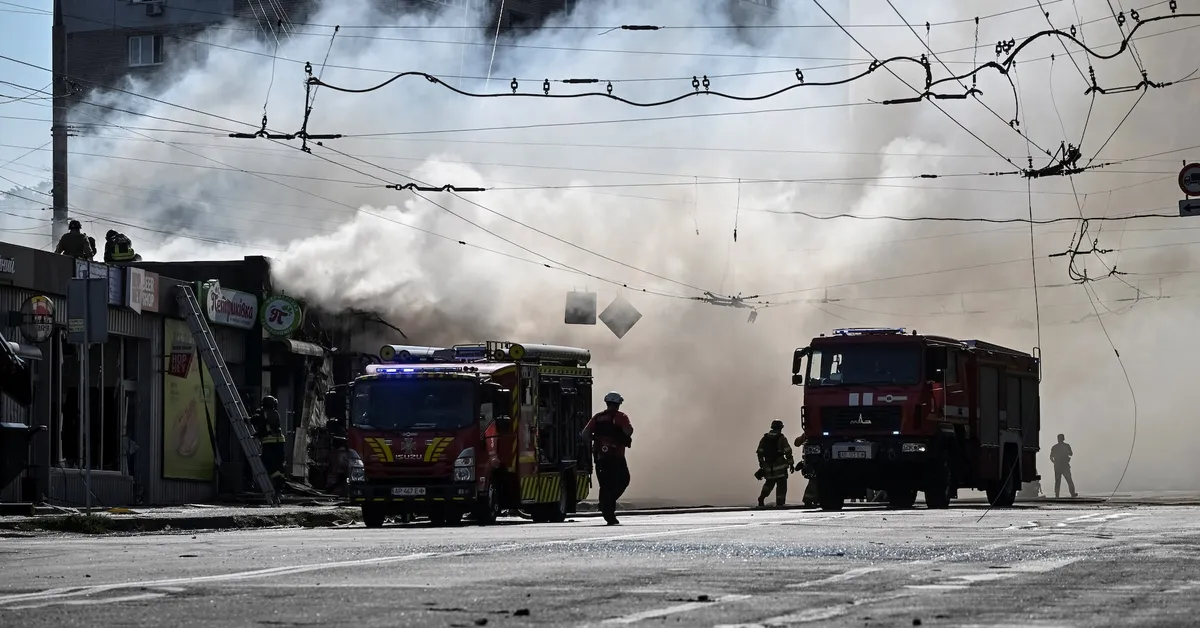
On August 19, 2023, U.S. and European military planners initiated discussions regarding potential post-conflict security guarantees for Ukraine. This exploration comes in the wake of a commitment made by President Donald Trump to assist in protecting Ukraine as part of any agreement aimed at ending Russia's ongoing war. Following a summit on Monday, both Ukraine and its European allies expressed optimism about Trump's promise of security guarantees for Kyiv, although several critical questions remain unresolved.
According to sources speaking to Reuters, the Pentagon is currently conducting planning exercises to evaluate the various forms of support that the United States could provide beyond mere weaponry. Officials have indicated that establishing what is both militarily feasible and acceptable to the Kremlin will require time and careful consideration. One potential strategy discussed involves deploying European forces to Ukraine, with the operational command and control being managed by U.S. leadership, though these troops would operate under their respective national flags rather than a NATO banner.
The Pentagon and NATO have yet to comment on these discussions, but the White House has signaled its willingness to help coordinate a security guarantee for Ukraine. In contrast, Russia's Foreign Ministry has expressly rejected the idea of NATO troop deployment as part of any peace agreement.
While President Trump has explicitly ruled out the deployment of U.S. ground troops to Ukraine, he has indicated a possibility for other forms of military involvement. In a recent interview with Fox News, Trump suggested that the U.S. could provide air support to Ukraine. "When it comes to security, Europeans are willing to put people on the ground; we're willing to help them with things, especially by air," Trump stated, emphasizing the unique capabilities the U.S. possesses in this area.
This U.S. air support could manifest in various forms, including the provision of additional air defense systems to Ukraine or the enforcement of a no-fly zone utilizing U.S. fighter jets. Since the onset of Russia's full-scale invasion in 2022, the United States has supplied billions of dollars in weapons and munitions to Kyiv, despite a temporary halt in shipments during the Trump administration, which followed contentious discussions with Ukrainian President Volodymyr Zelenskiy.
In a related development, NATO military leaders are set to convene virtually on Wednesday to discuss the situation in Ukraine and determine the best course of action moving forward. This meeting, highlighted by Reuters, will feature a briefing from U.S. Air Force General Alexus Grynkewich, who oversees NATO operations in Europe. He will provide insights from the recent meeting between Trump and Russian President Vladimir Putin.
A U.S. official, who requested anonymity, revealed that U.S. General Dan Caine, the chairman of the Joint Chiefs of Staff, is expected to participate in the upcoming meeting and will also meet with several European counterparts in Washington on Tuesday evening. Trump has been advocating for a swift resolution to what has become Europe's deadliest conflict in 80 years, raising concerns among Kyiv and its allies that he might pressure for an agreement that favors Russia.
As the situation unfolds, it remains evident that Ukraine and its Western allies are poised to navigate a complex landscape of military strategy and diplomatic negotiations while facing the enduring threat posed by Russia's actions in the region.